COOKIES ON THE YOKOHAMA ATG SITE
We use cookies on this site to enhance your user experience. By clicking any link on this page, you are giving your consent for Yokohama ATG to set cookies.
February 18, 2022 << Back to Blog
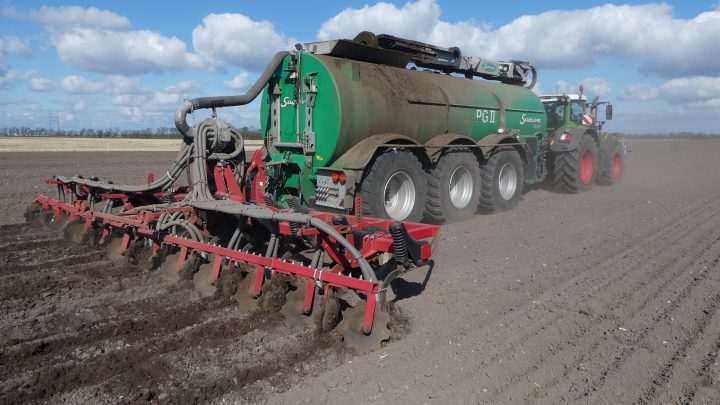
February 18, 2022
Yokohama ATG Tires’ Alliance 372 and 389 VF tires allow for higher profitability according to a recent study in Denmark
The Danish agricultural advisory and research team of SEGES Innovation conducted scientific field trials to assess the benefits of using VF rather than conventional tires on a tractor trailer combination in cooperation with Nordisk Dæk Import (NDI, Yokohama ATG Tires’ Alliance distribution partner for the Nordics) and Bjolderupgaard Maskinstation. In this experiment, Alliance 372+ and 389+ Agriflex tires (VF600/70R34, tractor front; VF710/75R42 tractor rear; VF800/60R32 liquid manure spreader) were put to the test.
“The results of these scientific field trials clearly show a shallower track depth, less wheel slip, significantly reduced soil compaction and significantly higher maize yields in the plots where VF tires were used instead of conventional tires”, reports Gerrit Vinkers, Application Specialist at Yokohama ATG Tires (Y-ATG), and he continues: “In sum this translates to yield increases between 1.5 and 2.2 percent per hectare, and calculated profit gains for farmers between 21.8 and 32 EUR per hectare: clear evidence that our VF tires really pay off!”
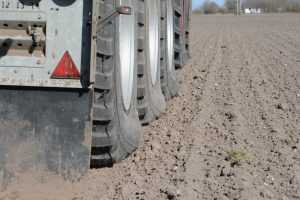
‘Gentle’ application of liquid manure
Prior to the field trials, the rough clay-mixed sandy soil (JB3 in Danish soil classification) on the research plot near Ribe, Denmark, was ploughed on April 20th and re-compacted with a harrow and packers on April 22nd under very dry soil conditions. Liquid manure was applied on April 23rd with an incorporator for placed slurry, using the same tractor and slurry trailer for both variants, i.e. with VF and conventional tires. Maize seeding took place on May 20th. For the tests, a Fendt 939 tractor plus Samson PG27 slurry trailer (27m³) with a total weight of 58,300 kg were used, and all tests were conducted fully loaded.
“That is where tire inflation pressure made for the decisive difference between VF and conventional tires in the experiment as identical tire sizes were used in both variants: whereas all VF tires were operated at 1.0 bar inflation pressure in the field, the figures for the conventional tires were 2.2 bar (tractor front), 2.5 bar (tractor rear) and even 3.0 bar (slurry tanker). The lower tire pressure of the VF variant led to a larger footprint and markedly reduced soil pressure”, Vinkers explains.
Convincing evidence
Several tire experiments conducted outside Denmark have shown that operating with low tire pressure increases yield and thereby the profit per hectare. “It seems that such kind of research was conducted for the first time on Danish soil, but the results are equally positive”, Vinkers reports. The results of the field trial show that it is possible to increase the yield between 1,5 percent (8 rows) and 2,2 percent (12 rows) depending on the working width of the slurry injector.
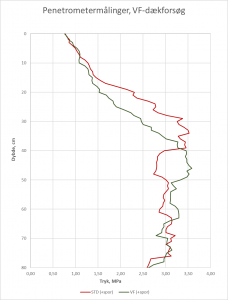
In addition to reducing tire inflation pressure and hence soil compaction, larger working widths and the resulting reduction of wheel tracks on the soil surface caused by liquid manure application also enhance the positive effects. According to the results of this study, measurements with a penetrologger showed lower soil compaction in the ‘VF tire tracks’ in the soil zone from 0 to 40cm. The lower soil compaction was even significant at a depth of 20 to 25cm. As a footnote, SEGES scientists explain in their report that below 40cm, the difference was the opposite. They assume that this is probably due to factors other than the choice of tires, which normally only has a significant influence in topsoil down to a depth of about 30cm.
“We feel that these scientific field trials give excellent evidence of the benefits of Alliance VF technology: maize yields in the tracks on the ‘VF tire plots’ exceeded those in the tracks on the ‘conventional tire plots’ significantly by about 12.9 harvest units per hectare, i.e. by about 10 percent”, says Gerrit Vinkers. “SEGES scientists explained that maize plants did not differ optically during the entire vegetation period. We were told that this is in line with research results from other countries, where a yield difference of up to 20 percent was not visible to the naked eye. With regard to this experiment, however, SEGES scientists highlighted that under less optimal driving conditions, an even greater influence of tire fitting on yield could probably be expected”, Vinkers reports.
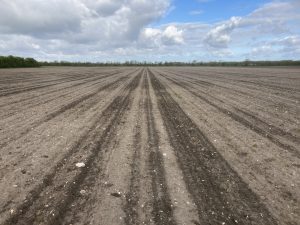
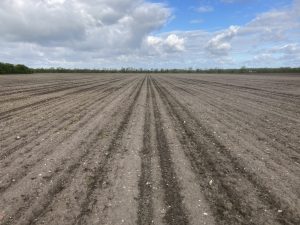
Tyre technology pays off
Scientifically validated data give the unprecedented opportunity to calculate the increased earnings that VF tires can create. “Based on the data from SEGES, and depending on the width of the slurry injector, an increase of earnings of 21.8 and 32 Euros per hectare was calculated”, highlights Gerrit Vinkers. He says: “If you have a 100-hectare field, you will achieve savings of several thousand euros per year. Moreover, the experiment showed that VF tires reduced wheel slip by 4,4 percent, which will undoubtedly lead to fuel savings. In addition to significantly lower soil compaction, the results of these field trials provide convincing evidence of the economic benefits of using VF tires such as the Alliance Agriflex 372+ and Alliance Agriflex 389+ – and that offers excellent arguments for the counseling of farmers and contractors.”
As an afterthought, Vinkers adds: “And there is one more aspect that deserves attention: Henning Sjørslev Lyngvig, one of the consultants within the area of field technology at SEGES, told us that the benefits of using VF tires in practice could possibly even be bigger than the ones seen in this field trial. When the manure was injected in April 2021, the soil was very dry, thus providing for excellent driving conditions. Soil protection and yield potentials are likely to be even more significant under suboptimal conditions. So you could imagine even bigger benefits by driving on less dry soil.”
01-Dec-2023
30-Oct-2023
16-Oct-2023
10-Oct-2023
04-Oct-2023
01-Sep-2023